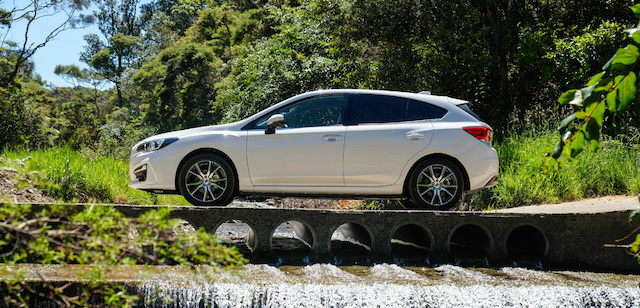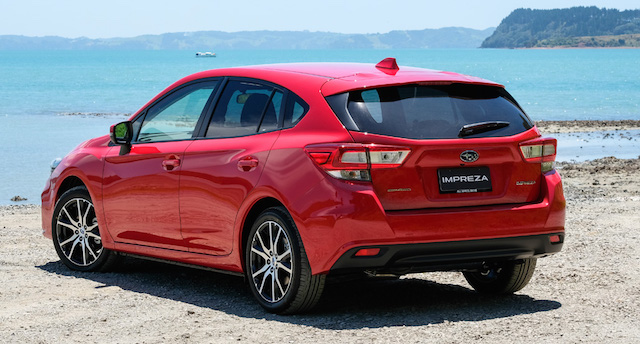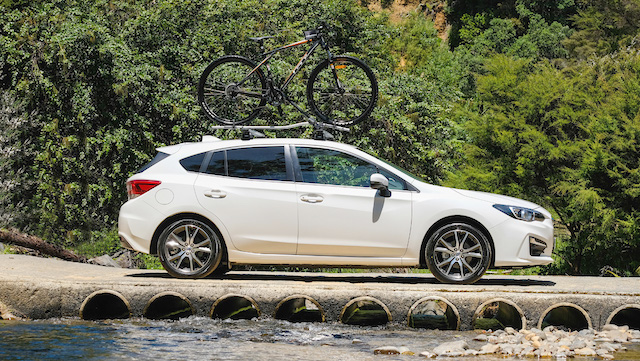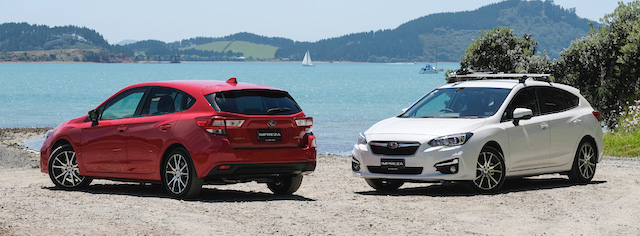
The crowning of the all-new Subaru Impreza as 2016 Japan Car of the Year came just days after New Zealand motoring writers trialled the pre-production hatchback on roads around Auckland.
The all-wheel-drive Impreza will go on sale here late in February, after its price is revealed around at the same time as the knees-up for the go-faster WRX’s 25th birthday at Rod Millen’s Leadfoot Festival on the Coromandel. The current model is on runout at $29,990.
Impreza beat the Toyota Prius for the prestigious all-Japan title, Subaru’s second homegrown COTY award after its Legacy won in 2003. Subaru spent around NZ$1.5 billion to develop the Impreza.
It is the first car to be developed on the company’s new global platform, architecture that will underpin a raft of new models from the Japanese manufacturer over the next decade.
Impreza chief engineer Kazuhiro Abe accepted the 2016 gong. He said: “When we started developing the Impreza over four years ago, never did I imagine I’d be standing here with such a prestigious award.
“The Impreza’s new global platform has great meaning for the company moving forward and will underpin nearly all of our next-generation models.”
Impreza is available worldwide as a sedan and hatchback, but Subaru NZ is bringing in only the five-door, the 2.0 Sport. Demand for small sedans in NZ is diminishing.
Standard equipment includes a rear-view camera and Subaru’s award-winning Eyesight safety system, which includes three autonomous braking modes, adaptive cruise control, and other driver-assist technologies. Eyesight has just won another major gong in the USA, this time from the Insurance Institute for Highway Safety.
In a nutshell, the car remains a conservative design but gets a much improved cabin, with soft-touch finishing, better infotainment, more occupant room, better seating, and practical storage features.
Its rigid new architecture, stiffer and stronger than before, allied with its mass sitting lower to the ground, revised suspension and stabiliser bars front and rear, makes it more agile and stable through corners and composed on motorways.
The direct-injection 2.0-litre 115kW/196Nm four-cylinder boxer engine is quieter and revs smoothly, and the marriage between it and the continuously variable transmission (CVT) in automatic mode is pretty much seamless, something that Subaru does well throughout its range.
Using the seven-step manual mode (six-step in the outgoing car) via paddles on the steering wheel results in up and down shifts quicker and with less flaring than before.
Impreza’s electro-mechanical steering is quick and accurate, and the stiffer platform means the rear axle is more in tune with the front’s axle’s direction, especially when pushing on.
Impreza isn’t available in NZ with Subaru’s torque-vectoring system. It applies brake force to the inside wheel, in turn allowing the car’s nose to tuck in tighter in corners and therefore minimise understeer.
The new Impreza is already a success in Japan, notching up 11,050 sales in its first month, or four times the company’s target of 2500 units. Subaru says 51 per cent of buyers had switched from other brands.
Unlike New Zealand automotive awards, Japan’s annual COTY ceremony is a nail-biting affair, say observers. The voting is counted down in front of a 200-strong audience and the result often hangs in the balance.
The jurors, 59 of them – made up of motoring journalists, TV and radio presenters, racing drivers and industry experts – each start with 25 votes and must give 10 votes to the car they rate the best.
Their remaining 15 votes are then spread across their next best four cars. Each juror must vote for five cars out of the final Top 10.
The votes of each juror are announced in front of the audience and tabulated. After 20 jurors’ votes had been read out in the 2016 awards, the difference between the Impreza and Prius was just nine votes, 138 to 129 votes.
But by the time the 40th juror’s votes were revealed, the Impreza’s lead had stretched to 27 votes. In the end, the Subaru ran away with 420 votes to 371 for Prius.





